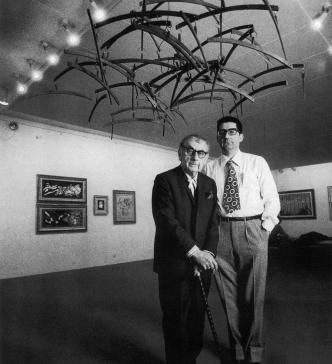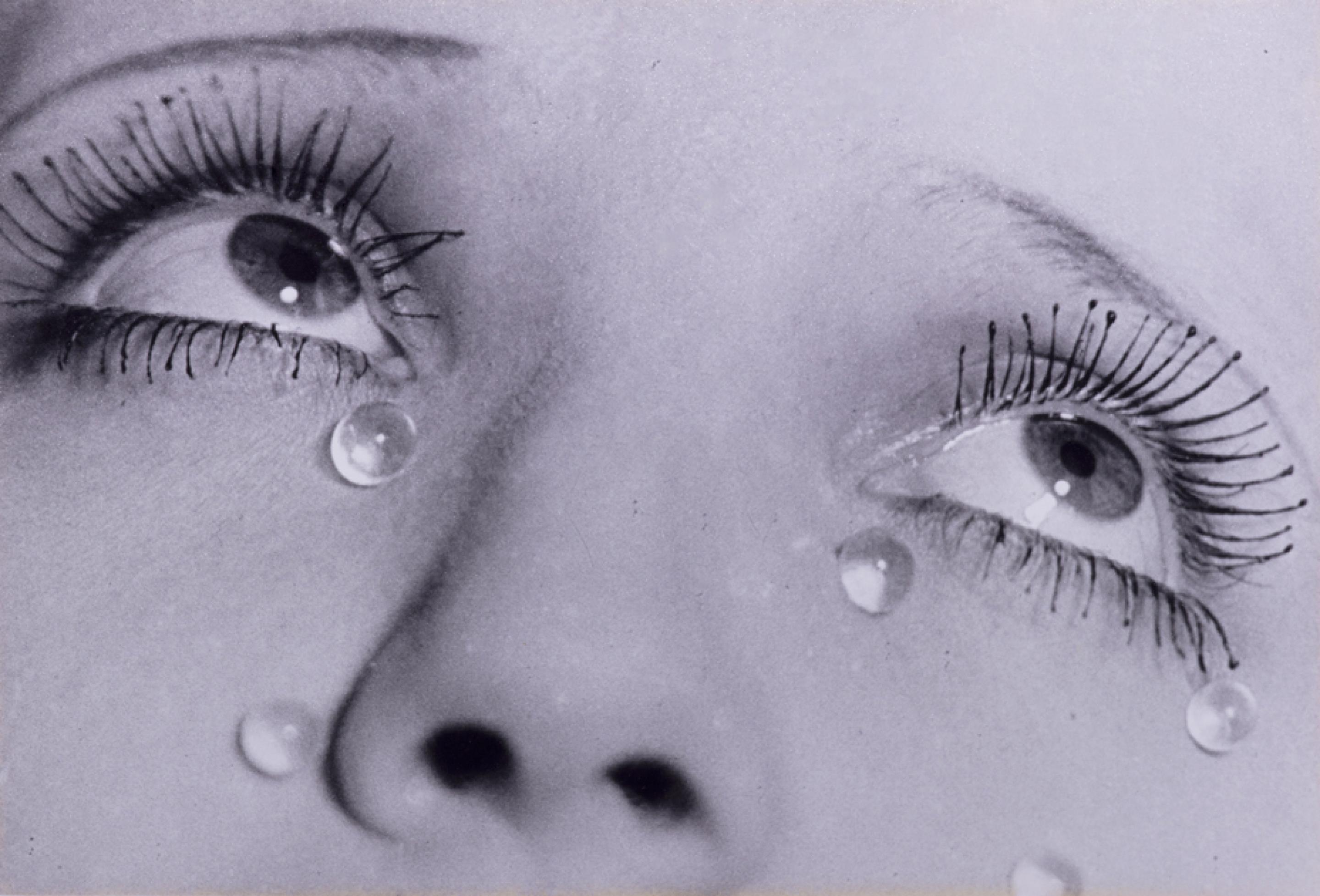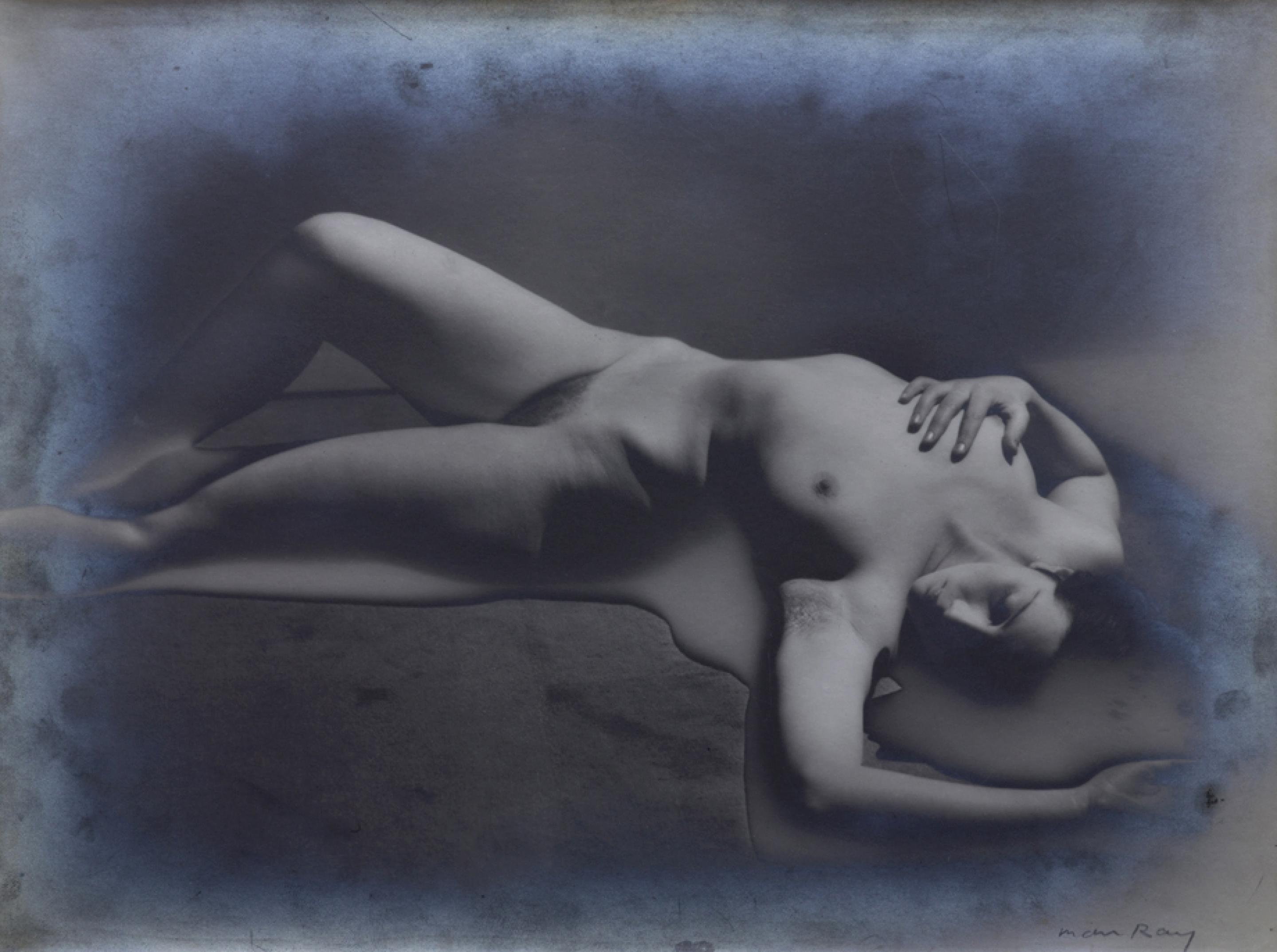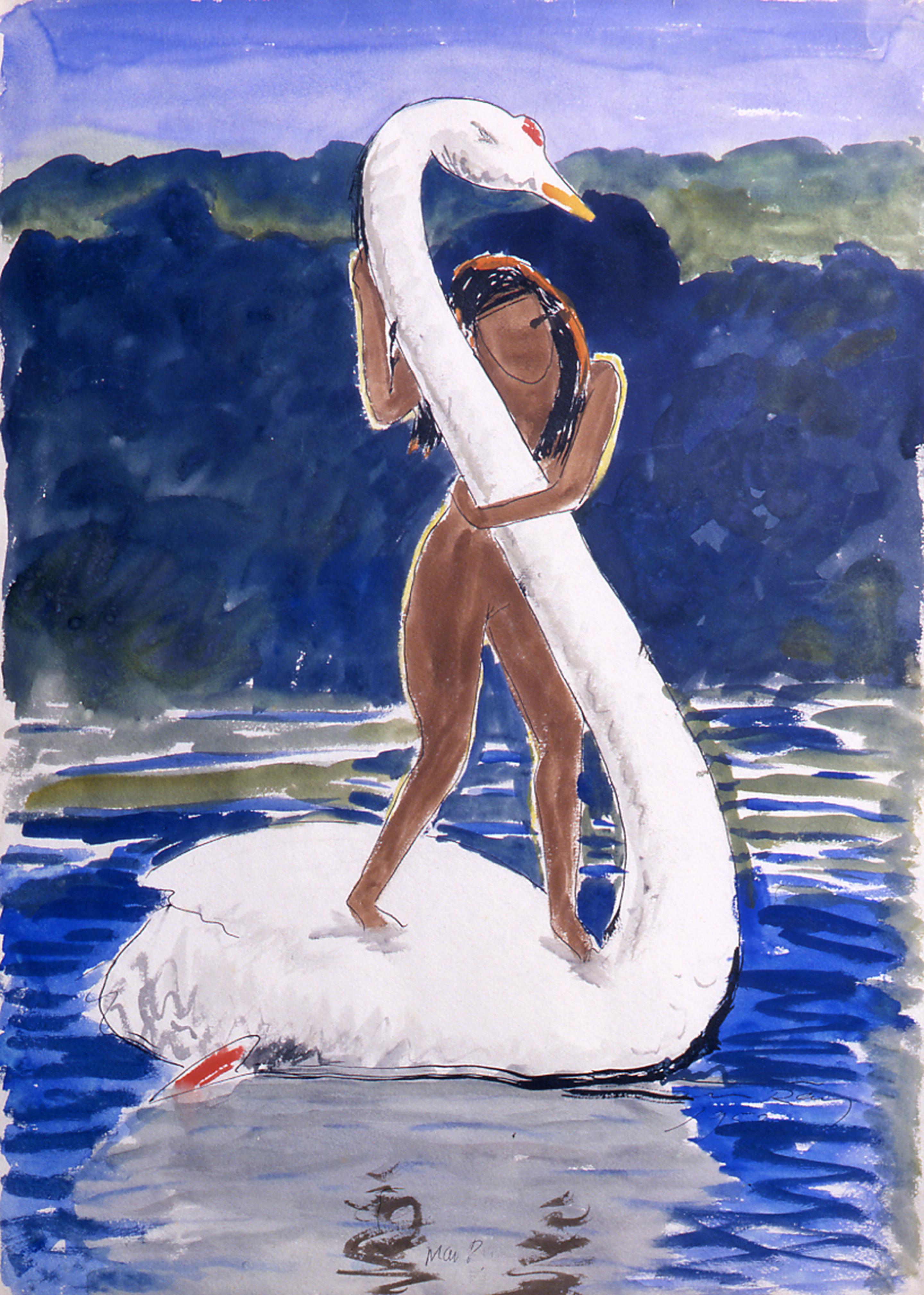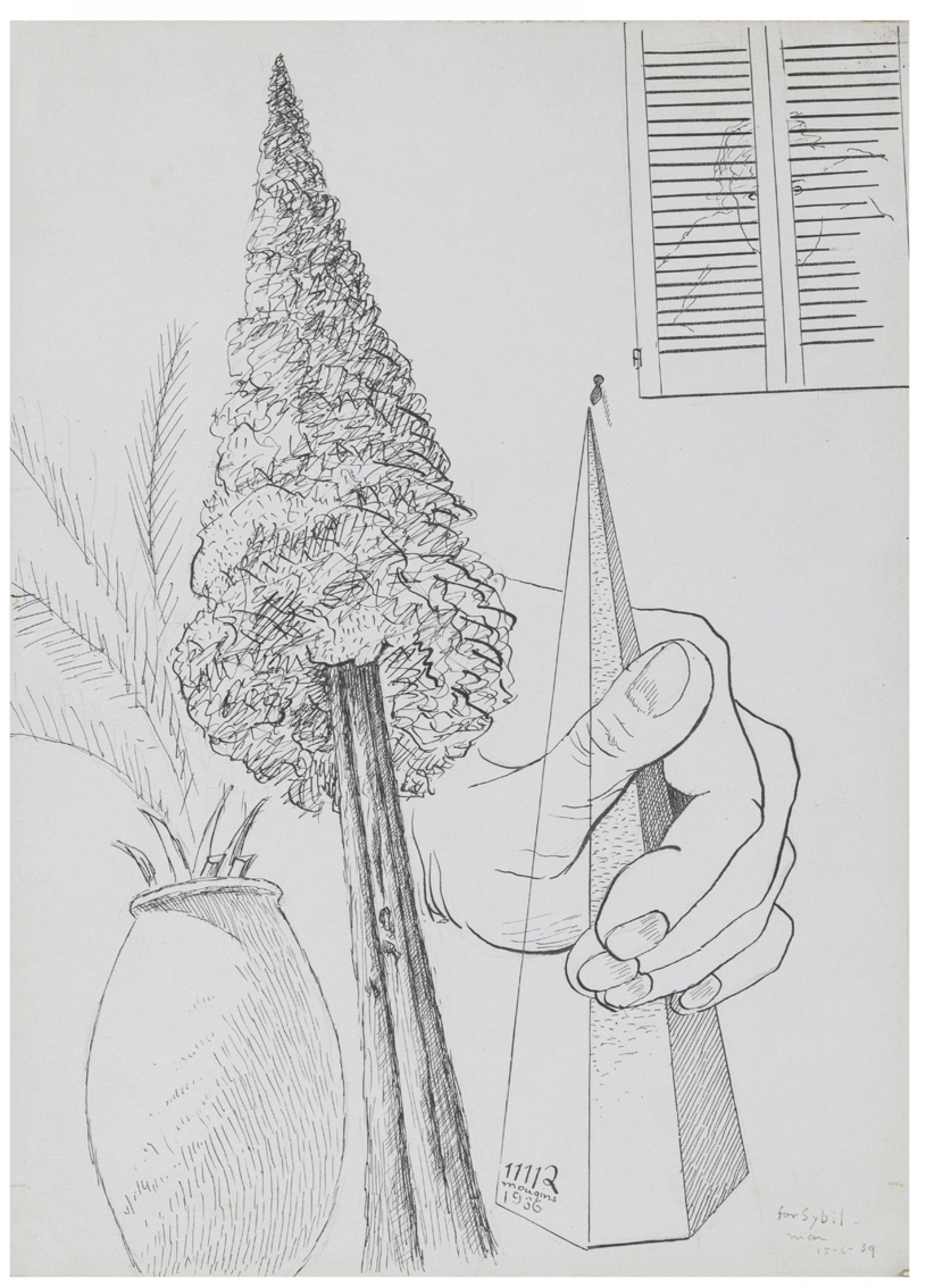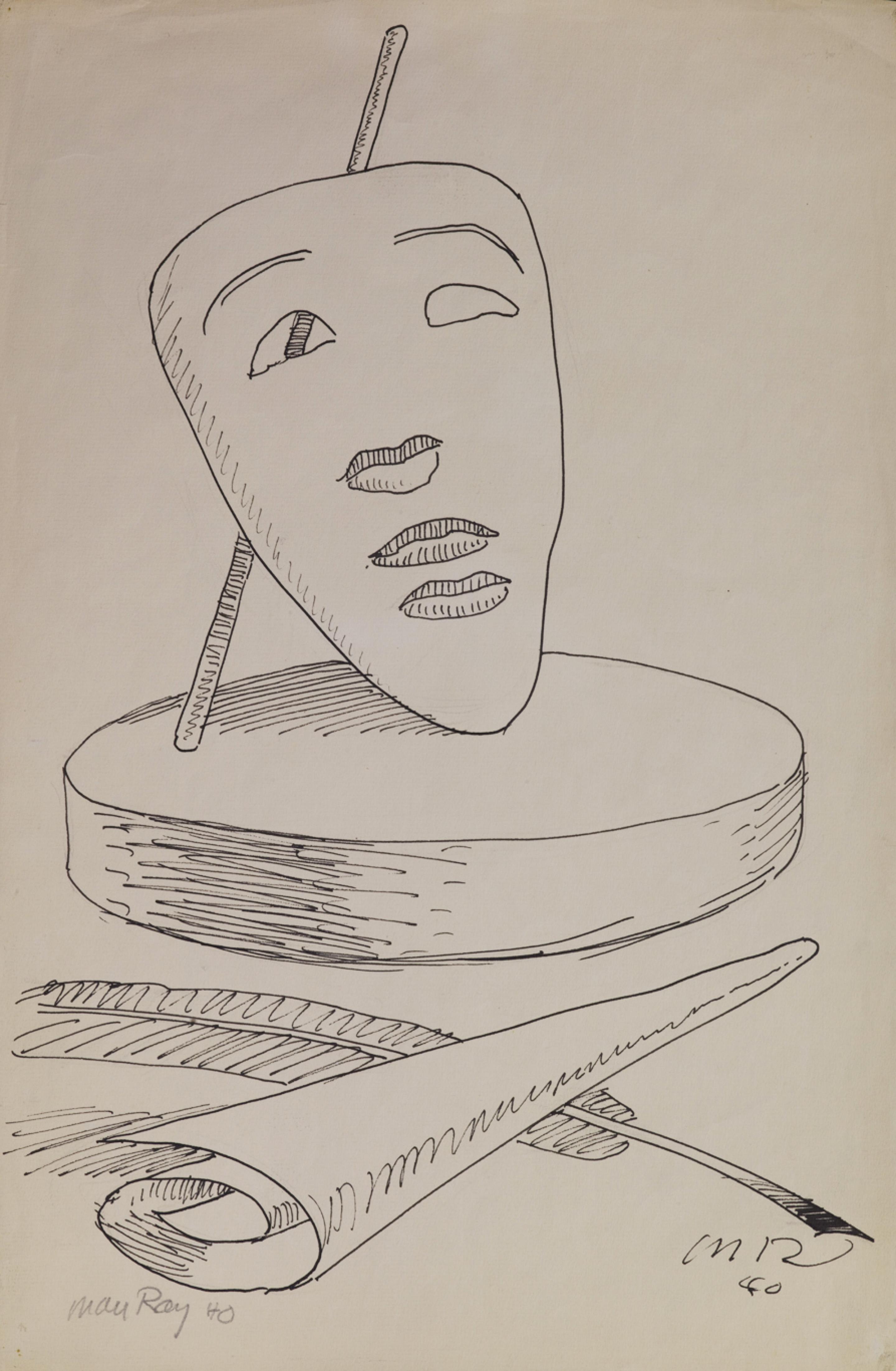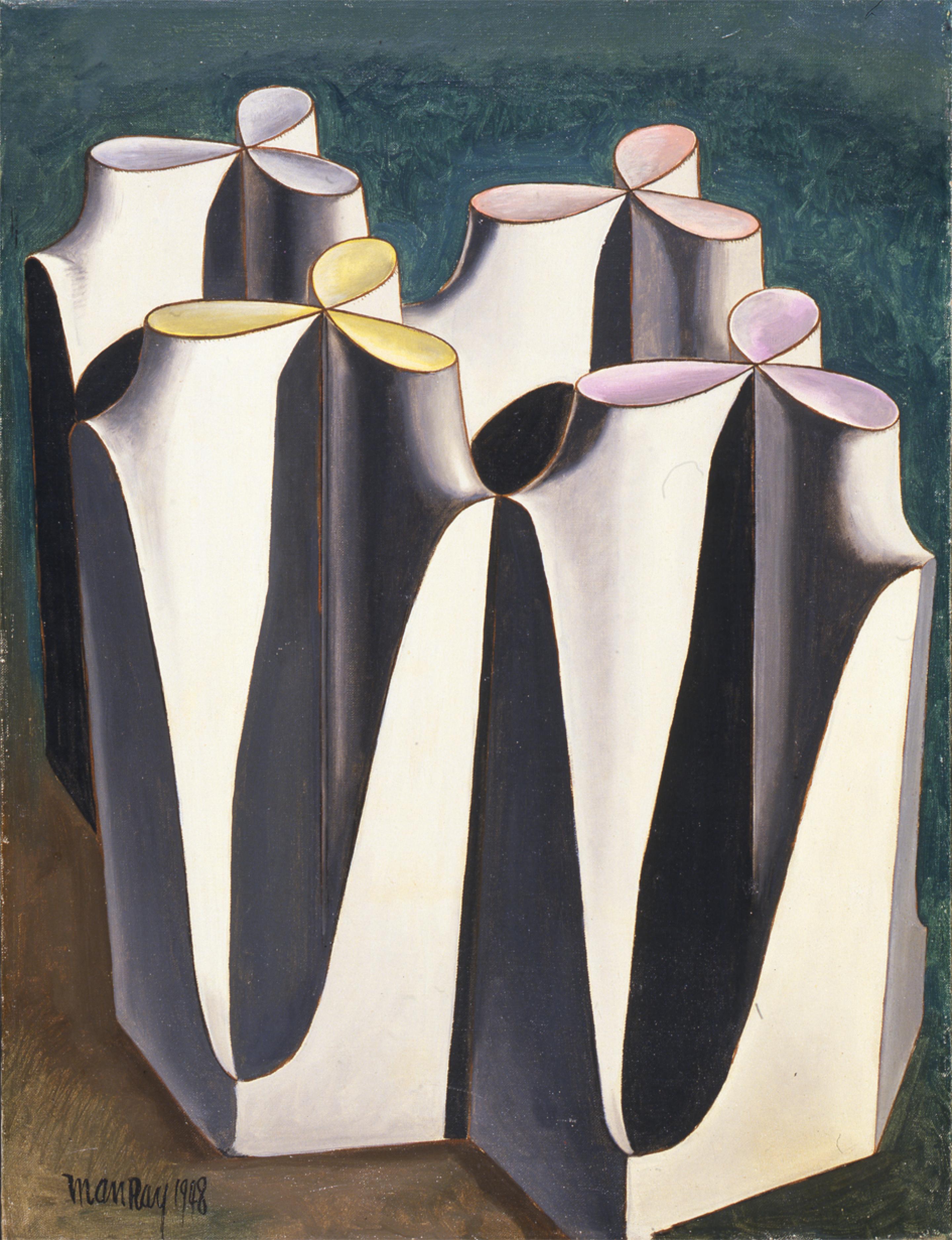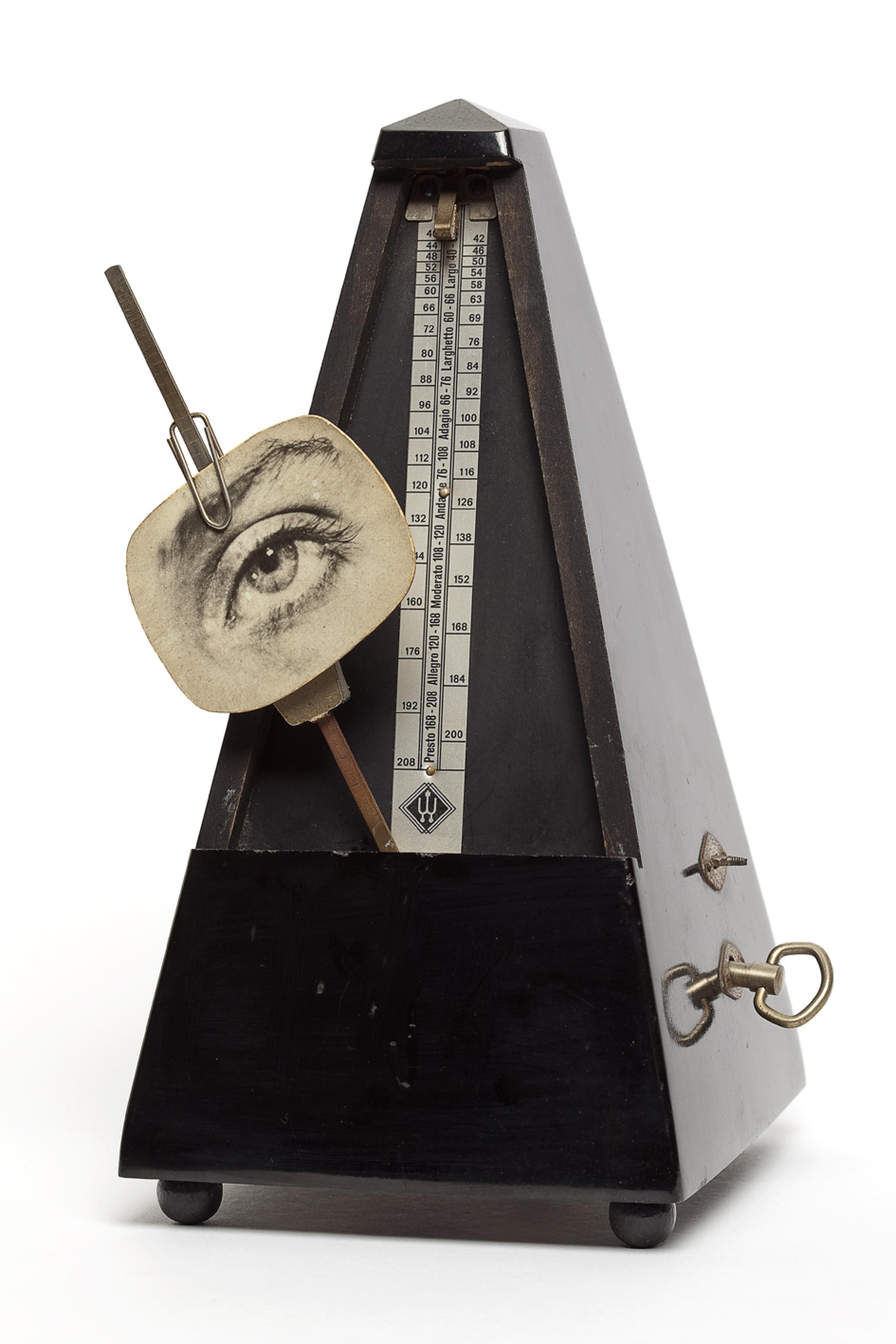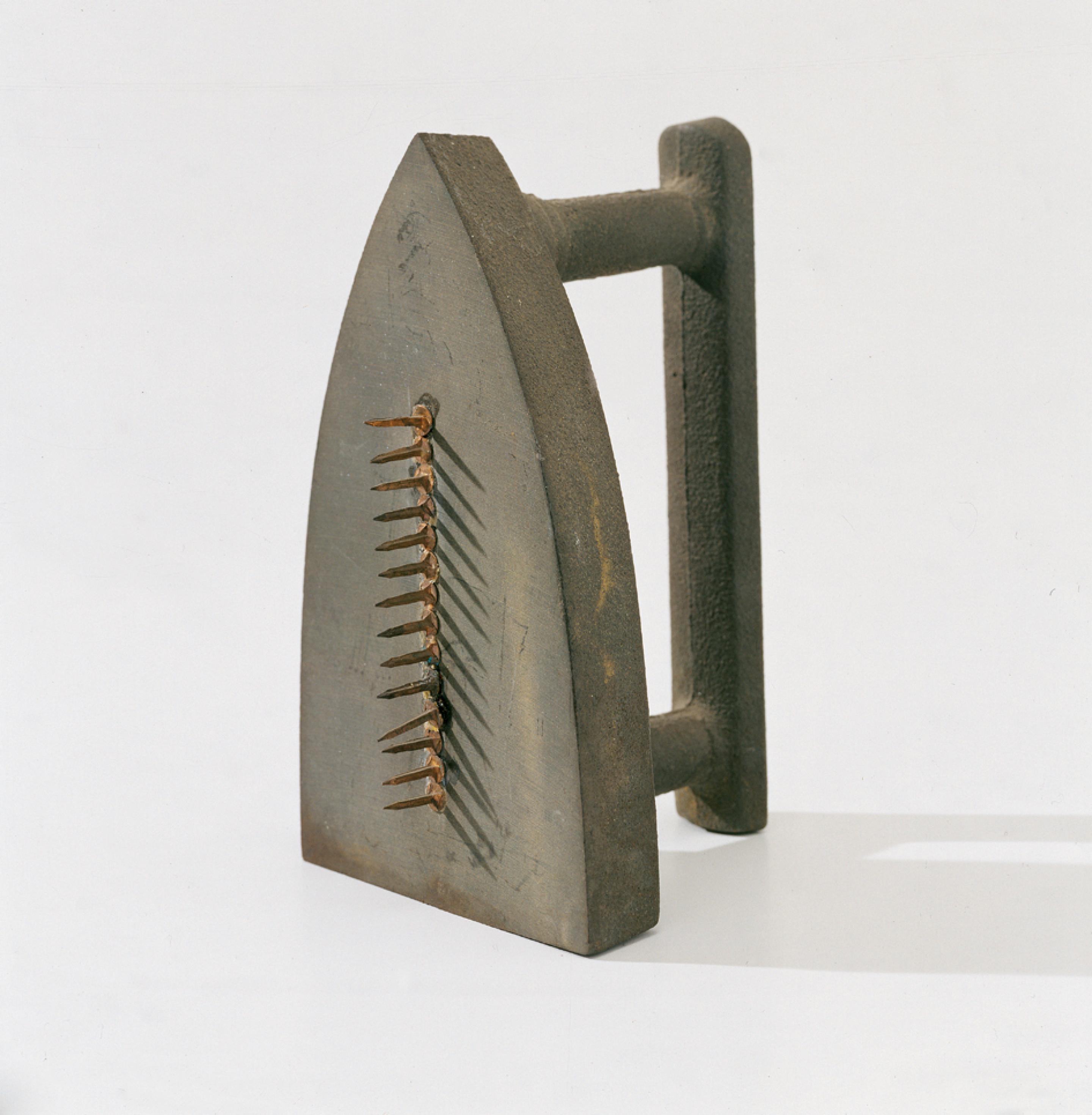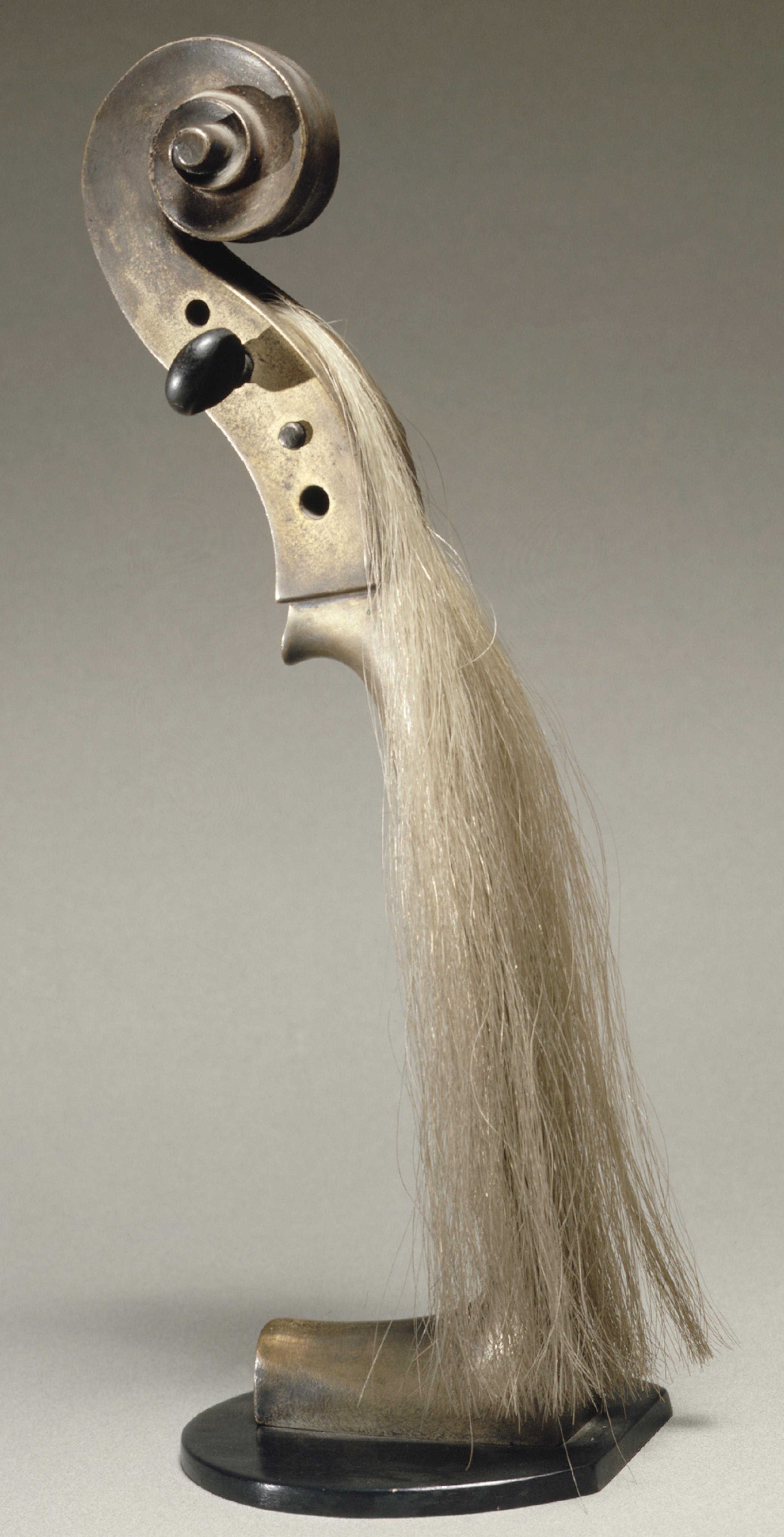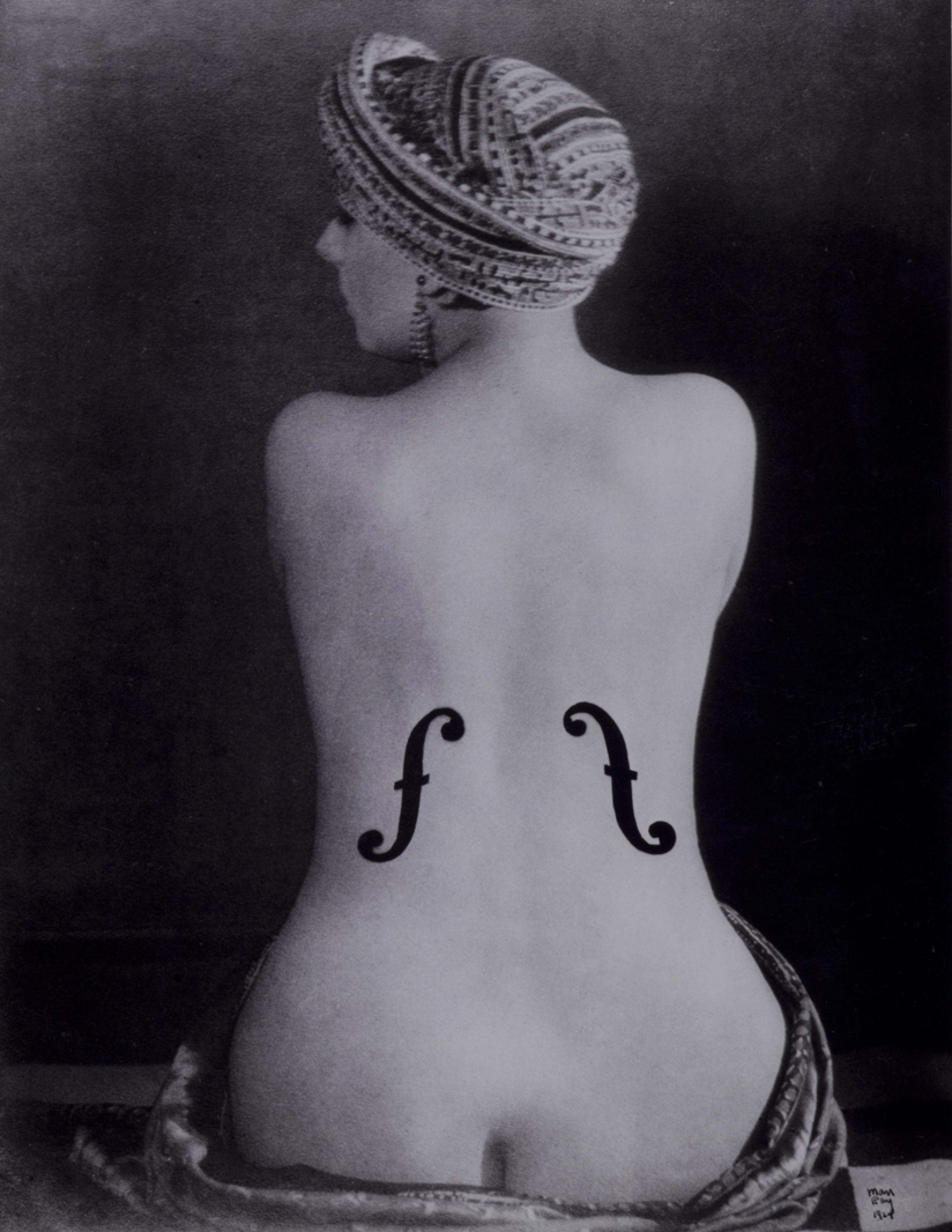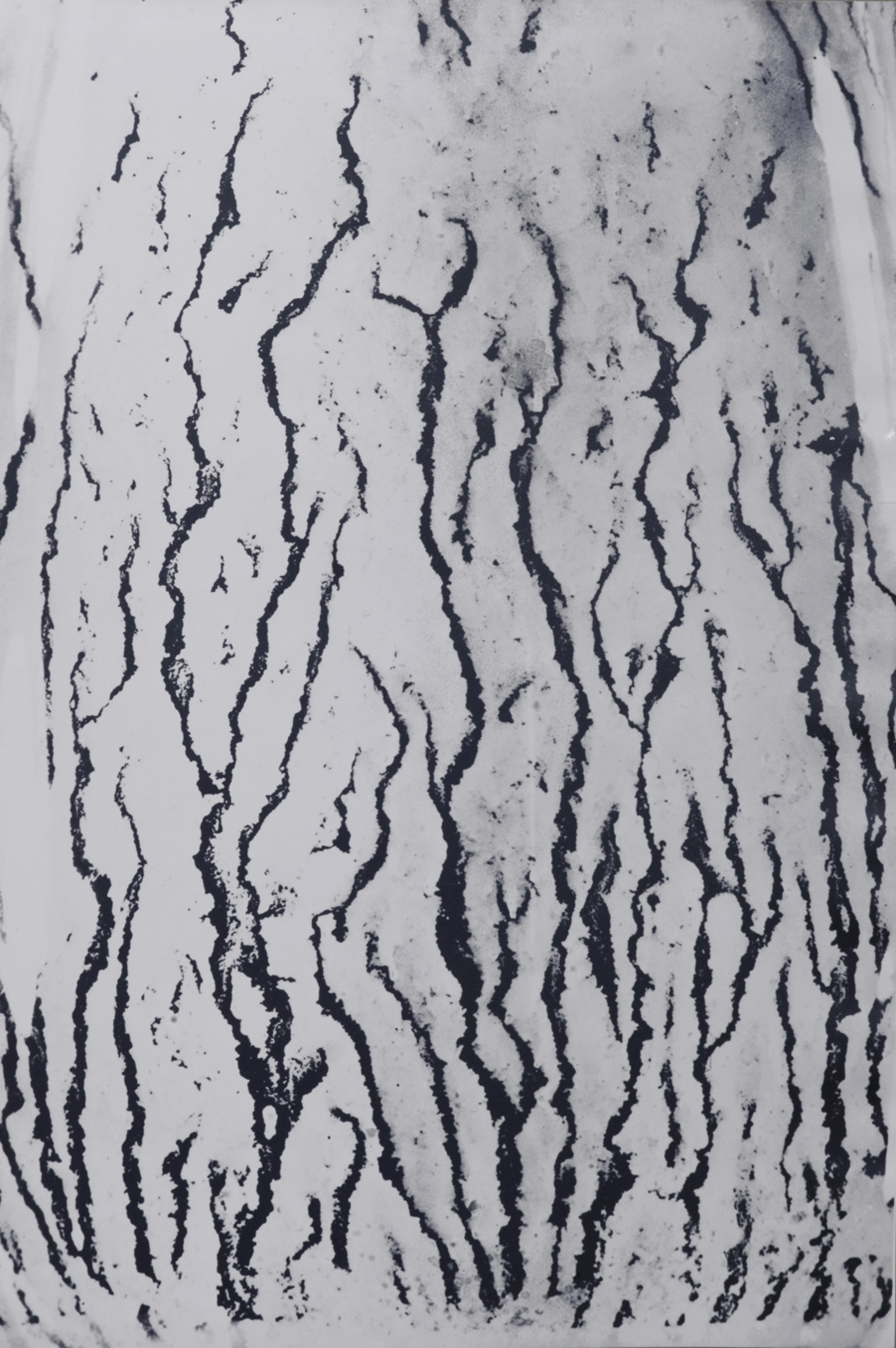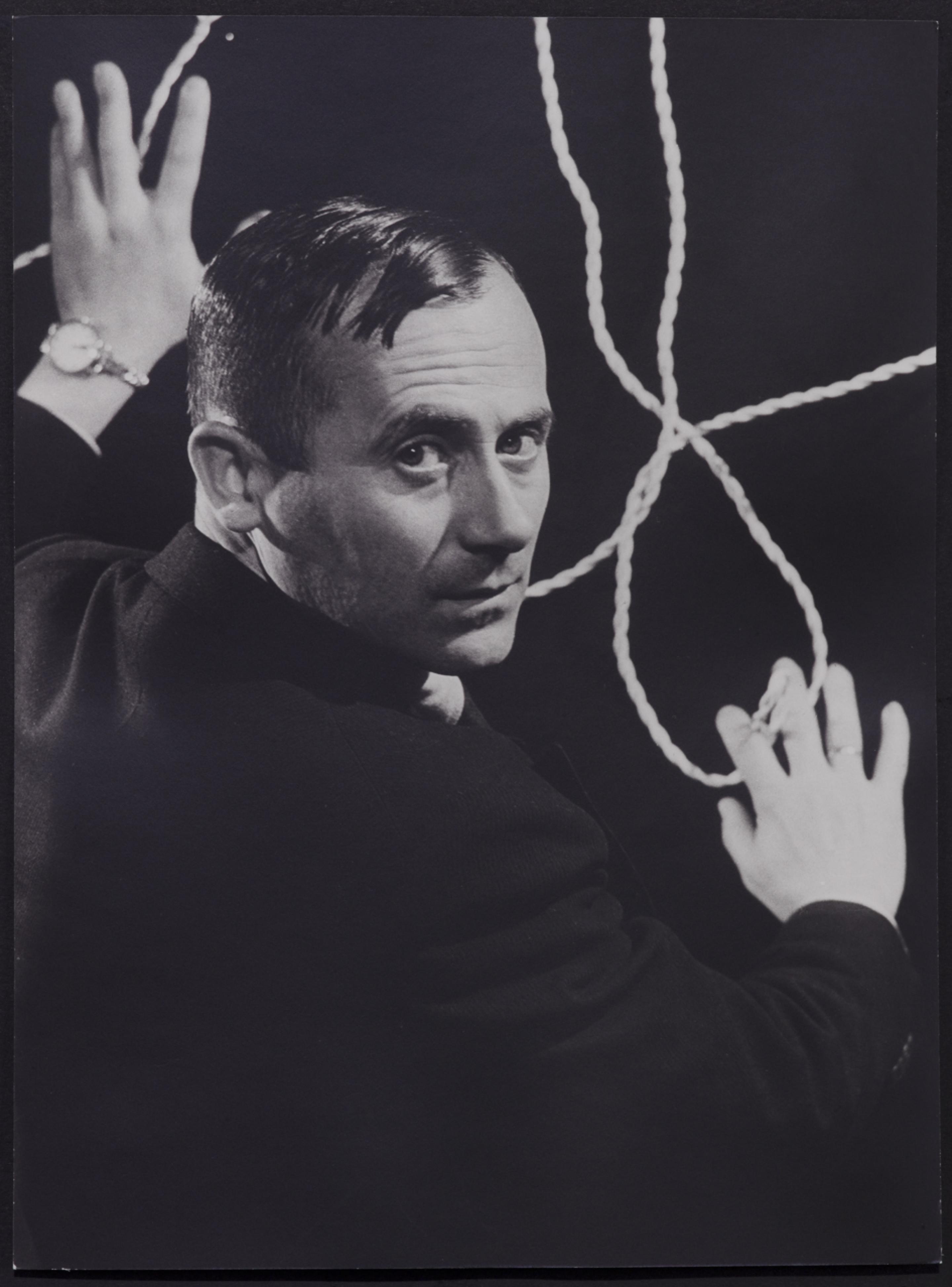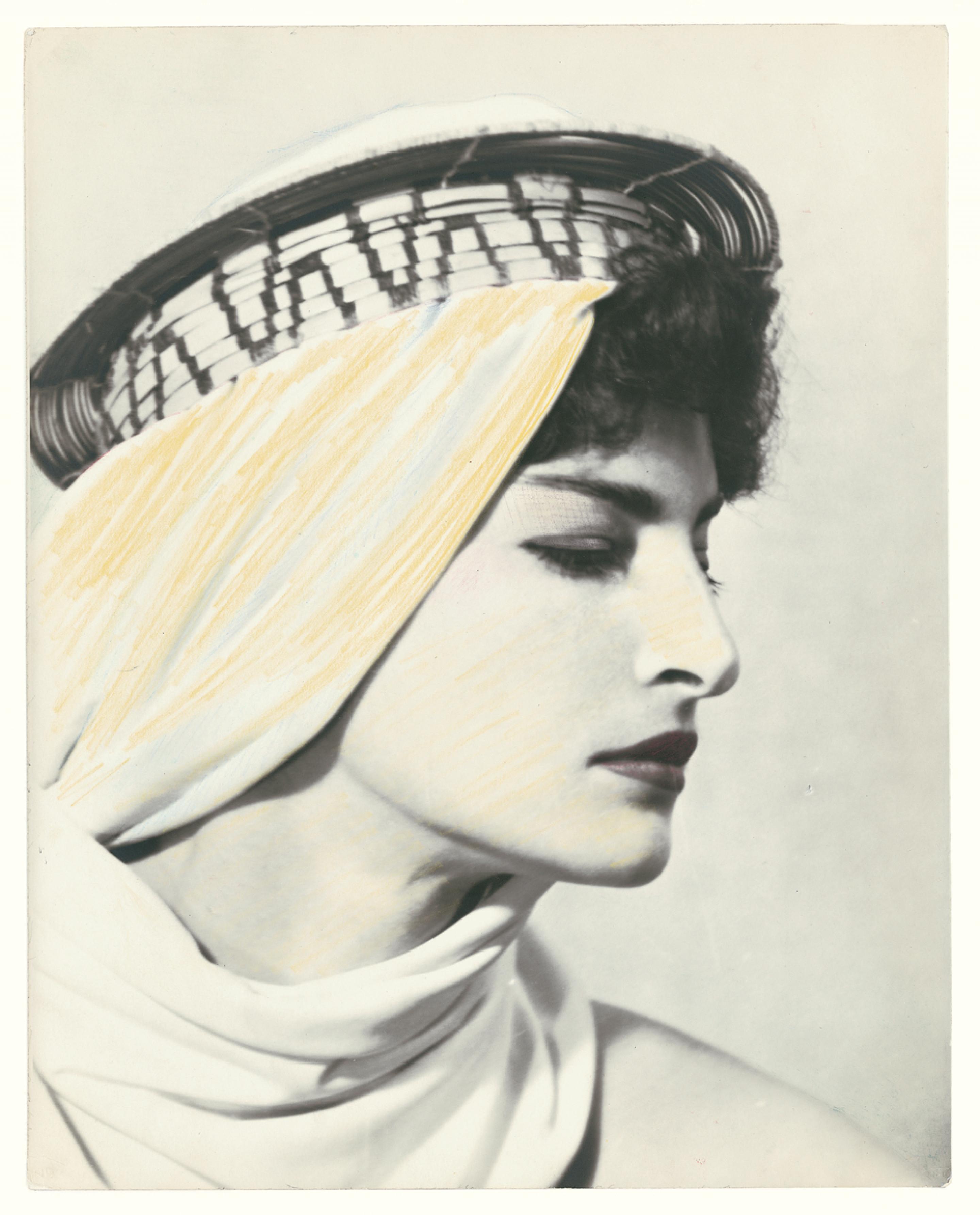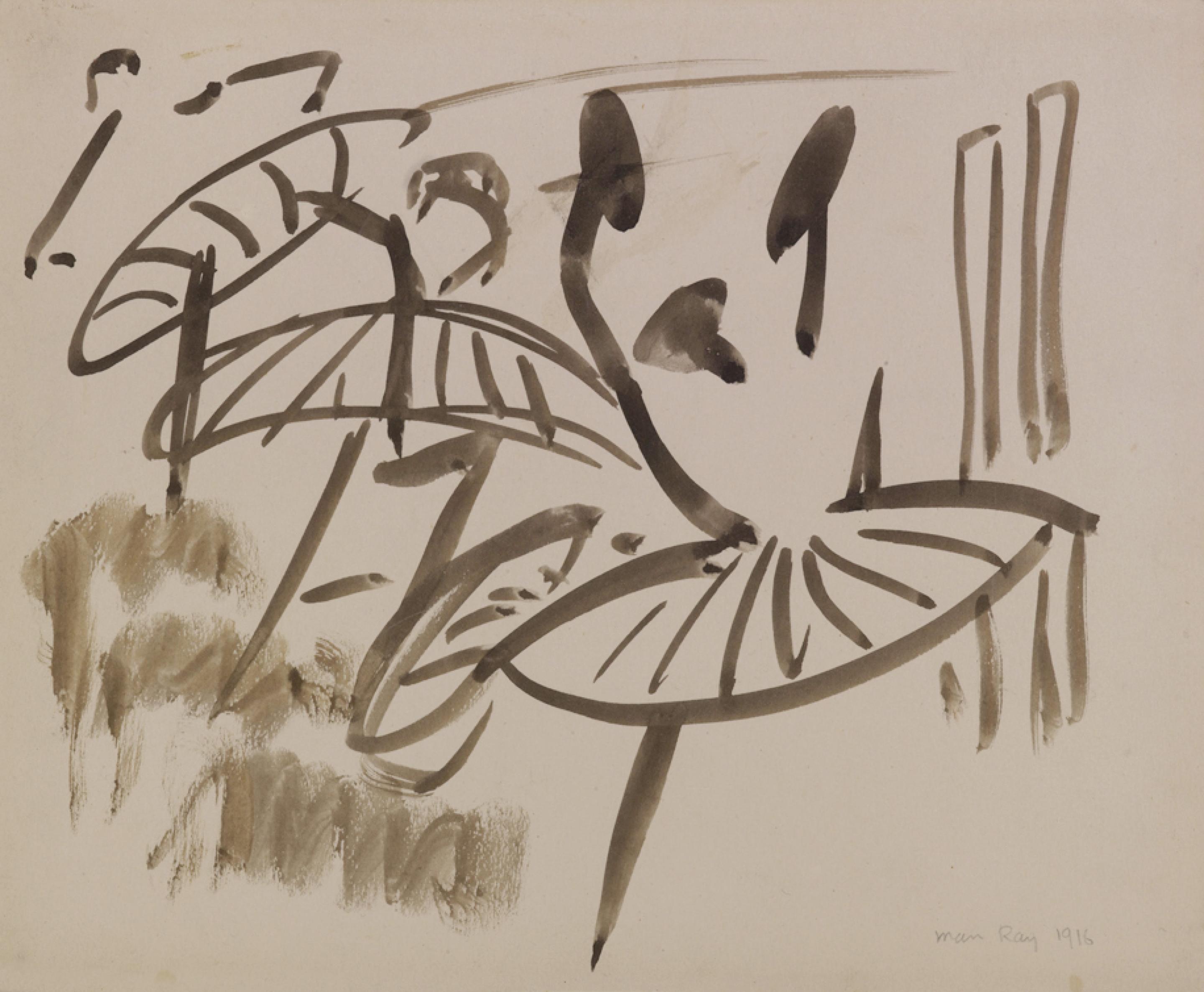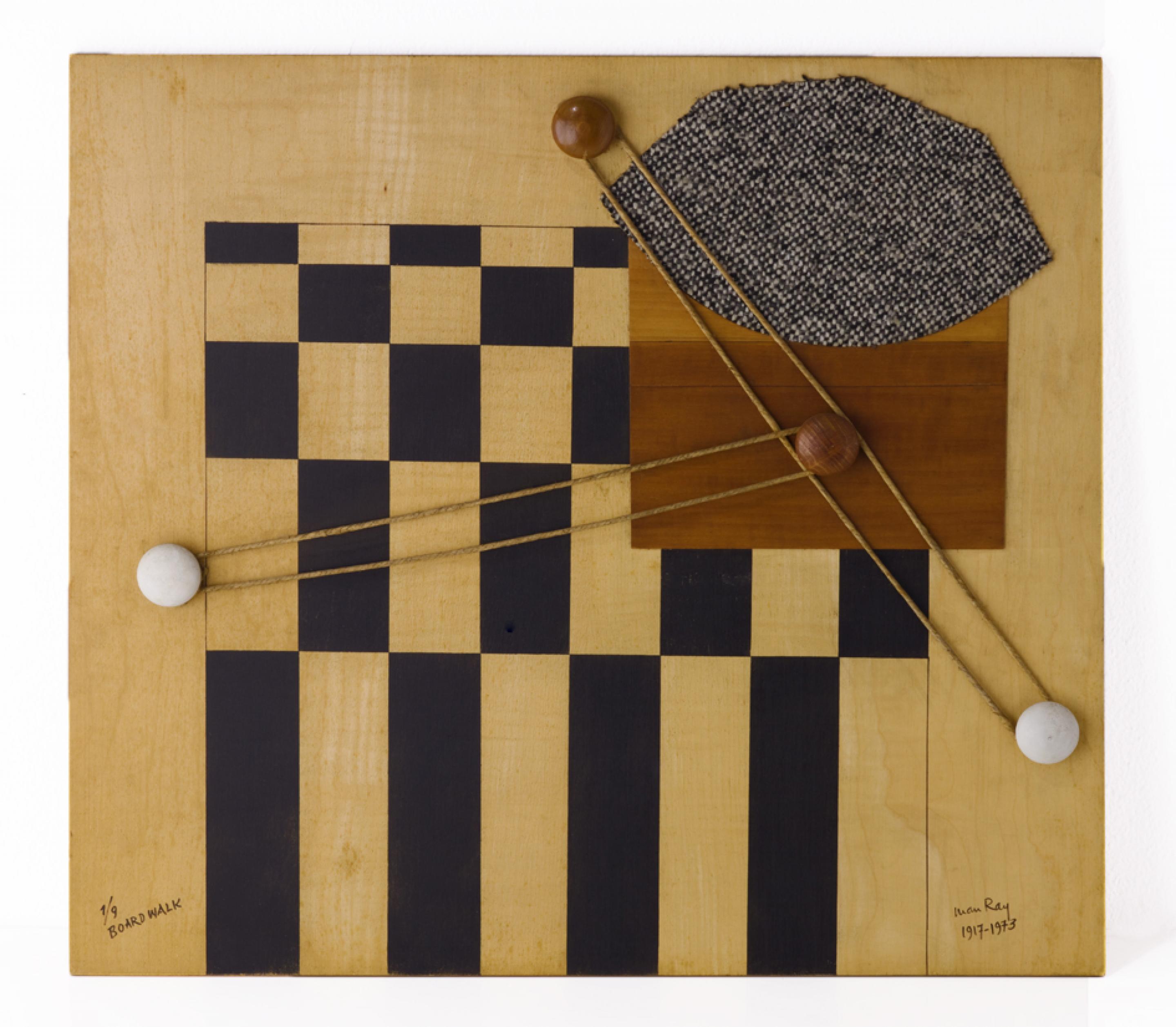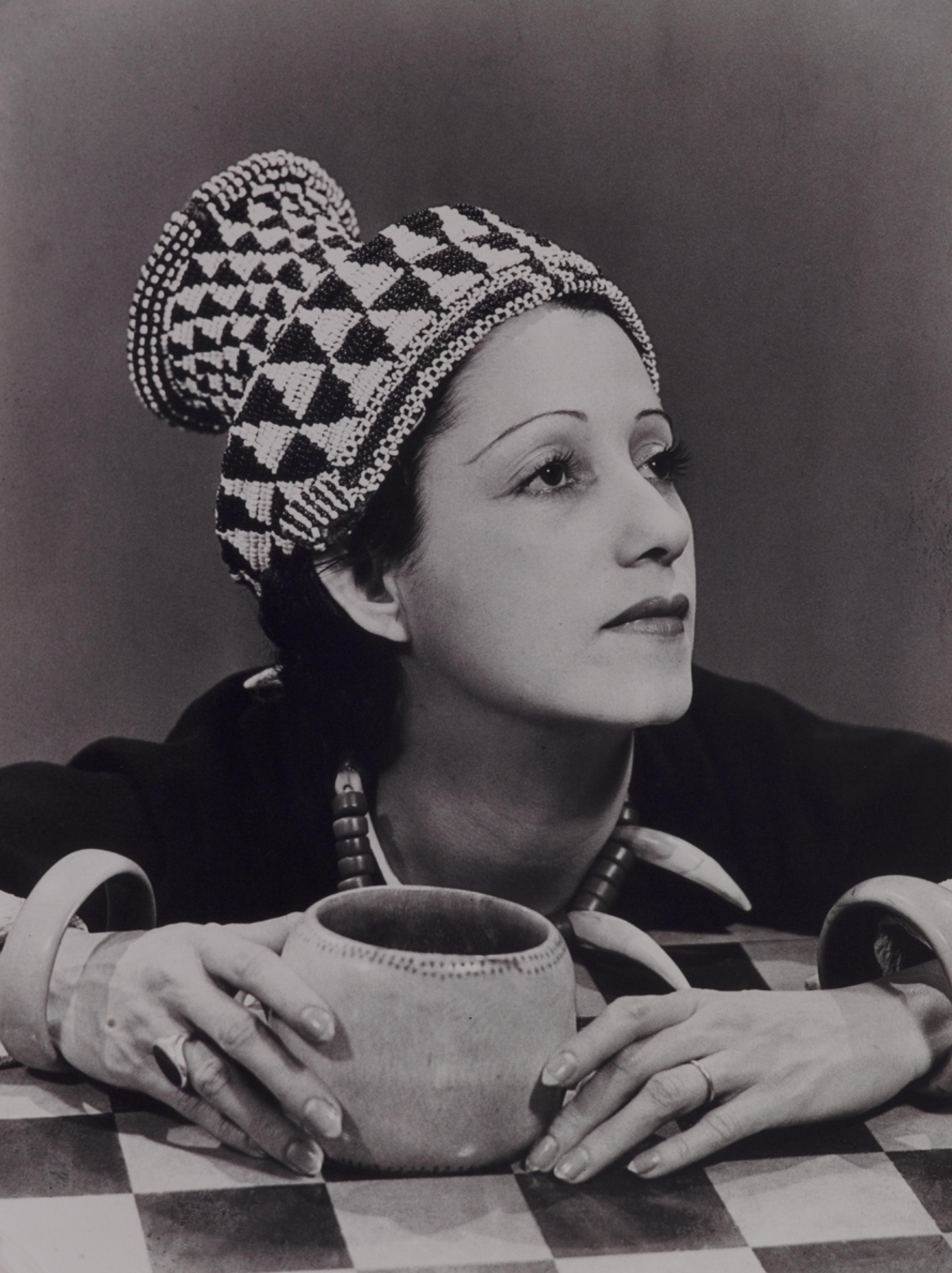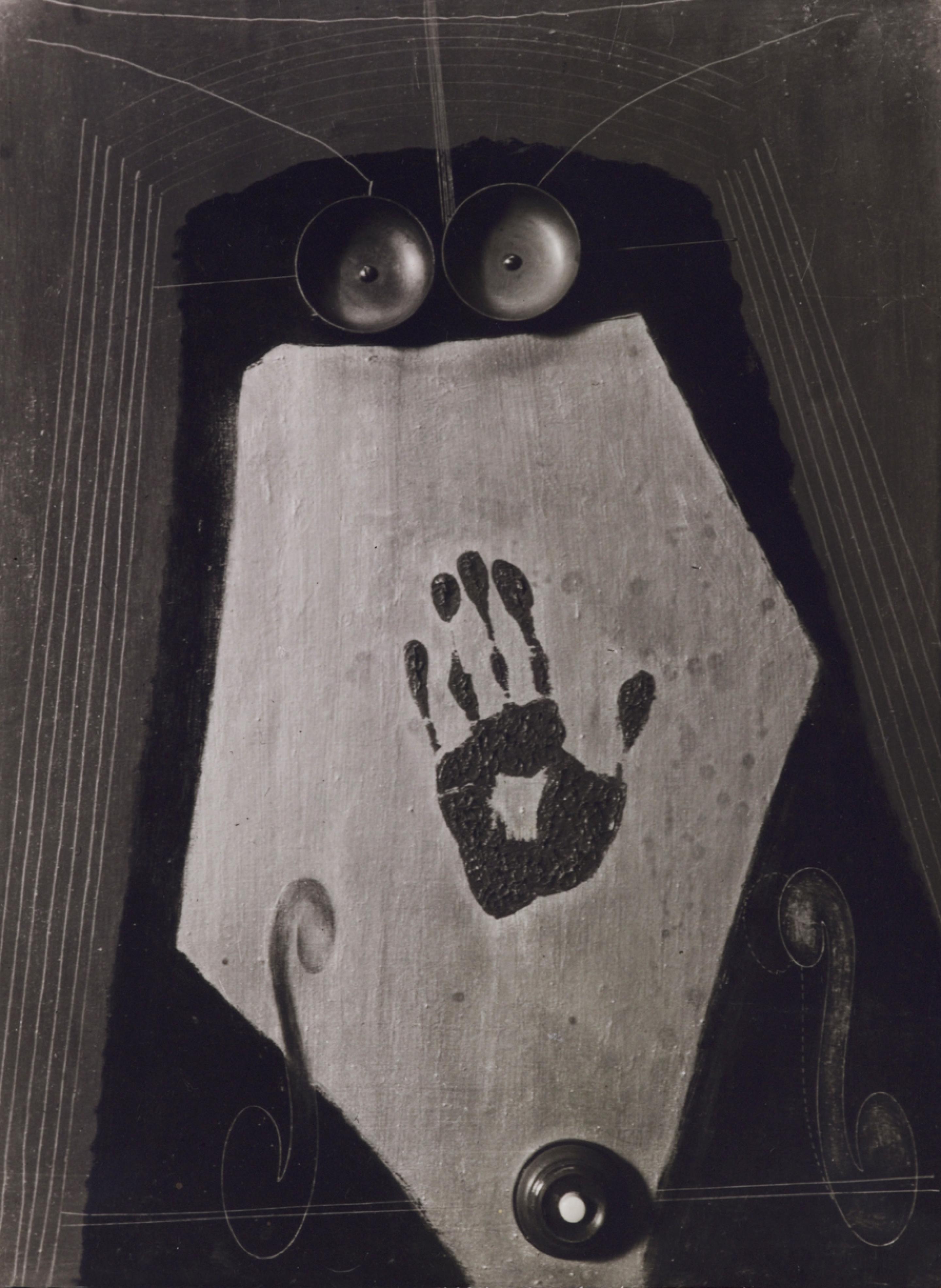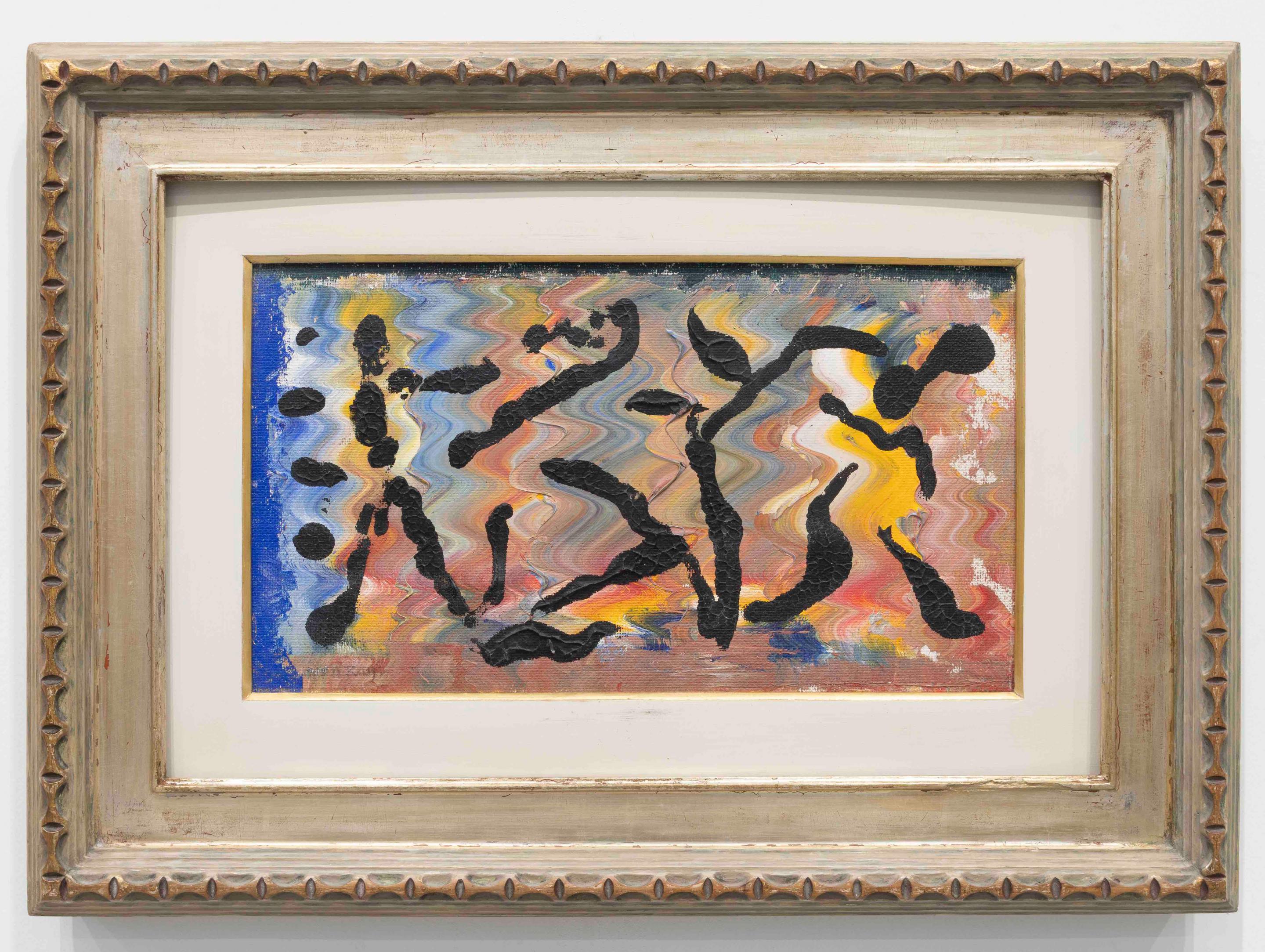ManRAY
About
In 1890, Emmanuel Radnitzky was born in Philadelphia to Jewish Russian parents who had emigrated to the United States in the late 1880s. When he was seven, the family moved to New York and settled in Brooklyn where they brought up their eldest son in the Jewish faith. Very early on Emmanuel Radnitzky changed his name to Man Ray, a transformational playing with identity which allowed fragments of the original name to live on in the new name. This logogriph was undoubtedly the artist’s first of many further linguistic wordplays.
In 1912, he enrolled in the anarchist-run Ferrer Center and began a period of intense and rapid artistic development. During those early years he became influenced by the avant-garde practices of European contemporary artists that he encountered at the seminal 1913 Armory Show as well as on frequent visits to Alfred Stieglitz’s gallery 291. Stieglitz soon became a mentor and taught Ray the basic principles of the photographic profession.
The year 1913 has been decisive in Ray’s early life as he moved into an artists’ colony in Ridgefield, New Jersey, where he was surrounded by other artists - among them Marcel Duchamp, with whom he started a lifelong friendship and collaborated extensively. Inspired by his friend, the inventor of the readymade, Man Ray used found objects in his art as early as 1919. During this prolific period he began experimenting with the print medium and continued drawing and painting. He also began writing poetry. As can be seen in many titles of his photographs, paintings, objects and drawings, they are embodiments of his linguistic experiments which oftentimes play on words and are humorous, critical and provoking.
In 1921, Man Ray moved to Paris, the center of the European avant-garde, where Duchamp introduced him to André Breton, Louis Aragon, Paul Éluard and his wife Gala. Ray was to remain in Paris for much of his life. Immersed in the vibrant artistic community of Montparnasse, he became the preferred portrait photographer of the Surrealists and the literary elite, capturing striking images of figures such as Pablo Picasso, Gertrude Stein, Ernest Hemingway, Jean Cocteau, Salvador Dalí, Peggy Guggenheim and Erik Satie.
Women are a recurring motif throughout Man Ray’s work. His most famous lovers during those Paris years -the artist model Alice Prin, better known as Kiki de Montparnasse, and the American photographer and photojournalist Lee Miller- appear in many of Ray’s photographs and have become female icons of this interwar era and, in Miller’s case, acknowledged and emancipated artists. Man Ray immortalized both women in multiple artworks: his perhaps most famous photograph, Le Violon d’Ingres, shows the back of a naked Kiki de Montparnasse with two f-holes painted on to make her body resemble a violin whereas Observatory Time - The Lovers, one of Surrealism’s most quintessential paintings, forever captures Lee Miller’s floating lips.
Man Ray is perhaps best known for his pioneering work in experimental photography. Particularly his rayographs, a punning combination of his own name and the word “photograph”, which are camera-less photographs in which objects, materials and sometimes parts of a model’s body were laid directly on light-sensitive paper in order to produce an image. In the rayographs, Ray turned recognizable subjects into wonderfully mysterious and magical compositions which lead the poet Tristan Tzara to describe them as capturing the moments “when objects dream”. Rather than treating it as a passive recording process, Ray used photography as a means of fathoming human desire, dreams and the unconscious. By doing so, he created some of the most iconic, beautiful and enigmatic images of the 20th century and forever changed the way images are made and looked at.
In spite of the commercial success of his photographs, Ray has always had a conflicting relationship with the medium photography. In a letter to his sister Elsie he exasperated: “I hate photography, and want to do only what is absolutely necessary to keep going, and produce something that interests me personally. (…) I have painted all these years (…) but these one-track minded Americans have now put me down as a photographer. (…) Do you wonder why I stay in Europe?” Beyond photography, Man Ray’s practice included assemblage, painting, and (kinetic) sculpture. Many of his works, such as Object to Be Destroyed (1923), a metronome with a photograph of an eye attached to its swinging arm, combined mechanical aesthetics with poetic absurdity, reflecting his interest in chance, automatism, and the unconscious mind.
In 1925, he participated in the first exhibition of Surrealism at the Galerie Pierre in Paris where his works were shown alongside those of Jean Arp, Max Ernst, Joan Miró, Giorgio de Chirico and Pablo Picasso. Ray became the de facto photographer for the Dadaists and Surrealists in Paris and contributed photographs to the three major Surrealist journals throughout the 1920s and 30s.
Though based in Paris, Man Ray’s artistic influence extended globally. He held numerous exhibitions across Europe and the United States and participated in major Surrealist events.
In 1940, Ray fled the Nazi occupation in France and returned briefly to the United States where he lived in Los Angeles and focused his creative energy on painting. A few days after arriving in LA, he met the dancer and artist model Juliet Browner whom he married in 1946 in a double wedding with his artist friends Dorothea Tanning and Max Ernst.
Man Ray returned to Paris in 1951 where he continued to work on his photographical experiments, collages, paintings and objects which he lovingly called his “objects of my affection”. He also returned to a number of his iconic earlier works, recreating them in new form.
In 1963, he published his autobiography, Self-Portrait, a sensational account of the early twentieth-century cultural world.
In 1969, the Studio Marconi in Milan held its first solo exhibition Je n’ai jamais peint on tableau récent with Man Ray. The show offered an overview of the artist’s eclectic production, reaffirming his status as a forerunner of conceptual and multimedia art.
On November 18, 1976, Man Ray died in Paris and was buried at the Montparnasse Cemetery. His enigmatic epitaph reads: “Unconcerned, but not indifferent.”
Man Ray’s works are held in the permanent collections of leading museums worldwide, including the Metropolitan Museum of Art, New York; Whitney Museum of American Art, New York; Museum of Modern Art, New York; Guggenheim Museum, New York; Smithsonian American Art Museum, Washington DC; Art Institute of Chicago; Philadelphia Museum of Art; The Menil Collection, Houston; J. Paul Getty Museum, Los Angeles; Los Angeles County Museum of Art; Tokyo Fuji Art Museum; Musem für Moderne Kunst, Frankfurt; Centre Pompidou, Paris; Tate Modern, London; Museo Nacional Centro de Arte Reina Sofia, Madrid; Stedelijk Museum, Amsterdam.
Over the decades, Man Ray has been the subject of major retrospectives at institutions including the Museum of Modern Art, New York; Jewish Museum, New York; Los Angeles County Museum of Art; J. Paul Getty Museum, Los Angeles; Centre Pompidou, Paris; Museum Boijmans Van Beuningen, Rotterdam; Serpentine Galleries, London; Tate Modern, among others.
In January 2025, the Fuji Art Museum in Tokyo opened Man Ray of Our Affections: An Exhibition Celebrating the 135th Anniversary of His Birth.
In September 2025, two Man Ray solo exhibitions will be inaugurated at the Palazzo Reale in Milan, Man Ray – Forme di Luce and the Metropolitan Museum of Art in New York, Man Ray: When Objects Dream.
In 1912, he enrolled in the anarchist-run Ferrer Center and began a period of intense and rapid artistic development. During those early years he became influenced by the avant-garde practices of European contemporary artists that he encountered at the seminal 1913 Armory Show as well as on frequent visits to Alfred Stieglitz’s gallery 291. Stieglitz soon became a mentor and taught Ray the basic principles of the photographic profession.
The year 1913 has been decisive in Ray’s early life as he moved into an artists’ colony in Ridgefield, New Jersey, where he was surrounded by other artists - among them Marcel Duchamp, with whom he started a lifelong friendship and collaborated extensively. Inspired by his friend, the inventor of the readymade, Man Ray used found objects in his art as early as 1919. During this prolific period he began experimenting with the print medium and continued drawing and painting. He also began writing poetry. As can be seen in many titles of his photographs, paintings, objects and drawings, they are embodiments of his linguistic experiments which oftentimes play on words and are humorous, critical and provoking.
In 1921, Man Ray moved to Paris, the center of the European avant-garde, where Duchamp introduced him to André Breton, Louis Aragon, Paul Éluard and his wife Gala. Ray was to remain in Paris for much of his life. Immersed in the vibrant artistic community of Montparnasse, he became the preferred portrait photographer of the Surrealists and the literary elite, capturing striking images of figures such as Pablo Picasso, Gertrude Stein, Ernest Hemingway, Jean Cocteau, Salvador Dalí, Peggy Guggenheim and Erik Satie.
Women are a recurring motif throughout Man Ray’s work. His most famous lovers during those Paris years -the artist model Alice Prin, better known as Kiki de Montparnasse, and the American photographer and photojournalist Lee Miller- appear in many of Ray’s photographs and have become female icons of this interwar era and, in Miller’s case, acknowledged and emancipated artists. Man Ray immortalized both women in multiple artworks: his perhaps most famous photograph, Le Violon d’Ingres, shows the back of a naked Kiki de Montparnasse with two f-holes painted on to make her body resemble a violin whereas Observatory Time - The Lovers, one of Surrealism’s most quintessential paintings, forever captures Lee Miller’s floating lips.
Man Ray is perhaps best known for his pioneering work in experimental photography. Particularly his rayographs, a punning combination of his own name and the word “photograph”, which are camera-less photographs in which objects, materials and sometimes parts of a model’s body were laid directly on light-sensitive paper in order to produce an image. In the rayographs, Ray turned recognizable subjects into wonderfully mysterious and magical compositions which lead the poet Tristan Tzara to describe them as capturing the moments “when objects dream”. Rather than treating it as a passive recording process, Ray used photography as a means of fathoming human desire, dreams and the unconscious. By doing so, he created some of the most iconic, beautiful and enigmatic images of the 20th century and forever changed the way images are made and looked at.
In spite of the commercial success of his photographs, Ray has always had a conflicting relationship with the medium photography. In a letter to his sister Elsie he exasperated: “I hate photography, and want to do only what is absolutely necessary to keep going, and produce something that interests me personally. (…) I have painted all these years (…) but these one-track minded Americans have now put me down as a photographer. (…) Do you wonder why I stay in Europe?” Beyond photography, Man Ray’s practice included assemblage, painting, and (kinetic) sculpture. Many of his works, such as Object to Be Destroyed (1923), a metronome with a photograph of an eye attached to its swinging arm, combined mechanical aesthetics with poetic absurdity, reflecting his interest in chance, automatism, and the unconscious mind.
In 1925, he participated in the first exhibition of Surrealism at the Galerie Pierre in Paris where his works were shown alongside those of Jean Arp, Max Ernst, Joan Miró, Giorgio de Chirico and Pablo Picasso. Ray became the de facto photographer for the Dadaists and Surrealists in Paris and contributed photographs to the three major Surrealist journals throughout the 1920s and 30s.
Though based in Paris, Man Ray’s artistic influence extended globally. He held numerous exhibitions across Europe and the United States and participated in major Surrealist events.
In 1940, Ray fled the Nazi occupation in France and returned briefly to the United States where he lived in Los Angeles and focused his creative energy on painting. A few days after arriving in LA, he met the dancer and artist model Juliet Browner whom he married in 1946 in a double wedding with his artist friends Dorothea Tanning and Max Ernst.
Man Ray returned to Paris in 1951 where he continued to work on his photographical experiments, collages, paintings and objects which he lovingly called his “objects of my affection”. He also returned to a number of his iconic earlier works, recreating them in new form.
In 1963, he published his autobiography, Self-Portrait, a sensational account of the early twentieth-century cultural world.
In 1969, the Studio Marconi in Milan held its first solo exhibition Je n’ai jamais peint on tableau récent with Man Ray. The show offered an overview of the artist’s eclectic production, reaffirming his status as a forerunner of conceptual and multimedia art.
On November 18, 1976, Man Ray died in Paris and was buried at the Montparnasse Cemetery. His enigmatic epitaph reads: “Unconcerned, but not indifferent.”
Man Ray’s works are held in the permanent collections of leading museums worldwide, including the Metropolitan Museum of Art, New York; Whitney Museum of American Art, New York; Museum of Modern Art, New York; Guggenheim Museum, New York; Smithsonian American Art Museum, Washington DC; Art Institute of Chicago; Philadelphia Museum of Art; The Menil Collection, Houston; J. Paul Getty Museum, Los Angeles; Los Angeles County Museum of Art; Tokyo Fuji Art Museum; Musem für Moderne Kunst, Frankfurt; Centre Pompidou, Paris; Tate Modern, London; Museo Nacional Centro de Arte Reina Sofia, Madrid; Stedelijk Museum, Amsterdam.
Over the decades, Man Ray has been the subject of major retrospectives at institutions including the Museum of Modern Art, New York; Jewish Museum, New York; Los Angeles County Museum of Art; J. Paul Getty Museum, Los Angeles; Centre Pompidou, Paris; Museum Boijmans Van Beuningen, Rotterdam; Serpentine Galleries, London; Tate Modern, among others.
In January 2025, the Fuji Art Museum in Tokyo opened Man Ray of Our Affections: An Exhibition Celebrating the 135th Anniversary of His Birth.
In September 2025, two Man Ray solo exhibitions will be inaugurated at the Palazzo Reale in Milan, Man Ray – Forme di Luce and the Metropolitan Museum of Art in New York, Man Ray: When Objects Dream.
